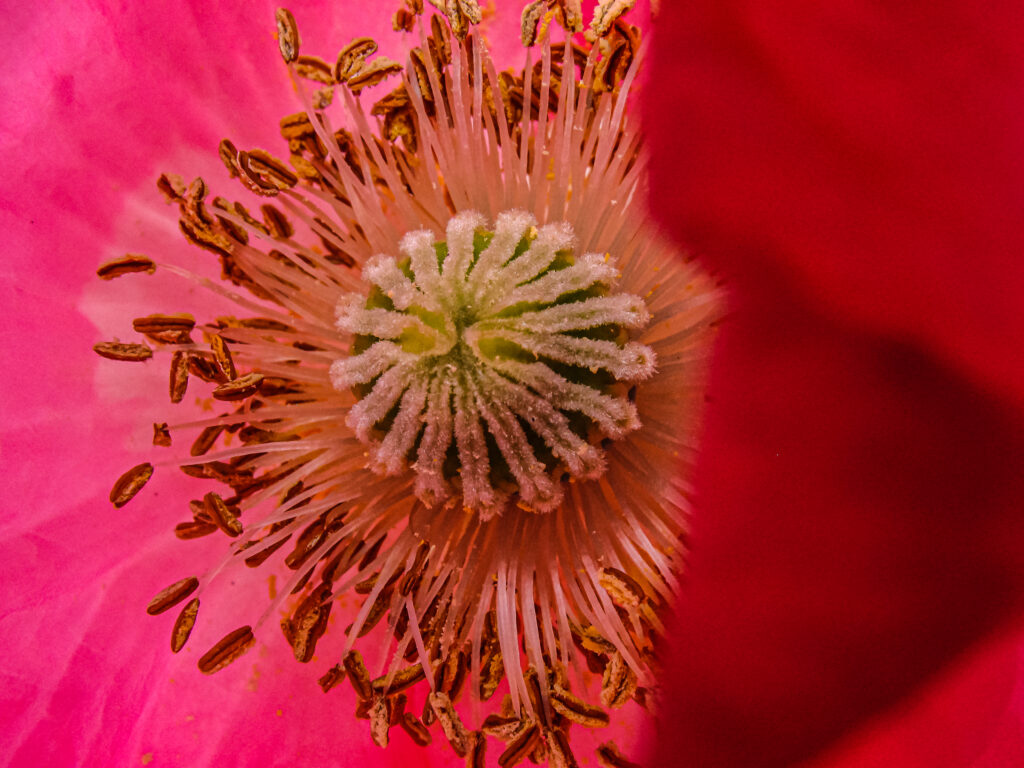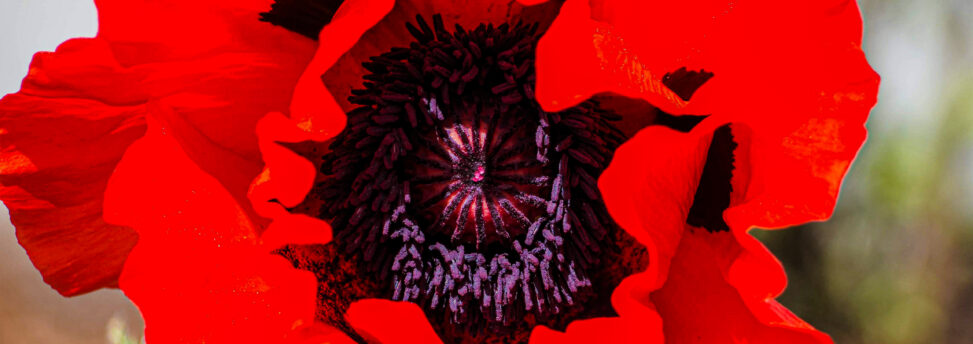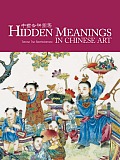
This close-up of a poppy in Tom’s Garden clearly shows some of the components of the reproductive system of a flower, as well as some of the ways poppies are distinctive.
Crepelike petals account for the red background. In the center of the petals is the stigma, which is the outer element of the pistil, the female reproductive organ. (You can remember this by thinking of the yin/yang dichotomy: pistols are yang/male whereas pistils are yin/female.) The stigma is where pollen germinates.
Supporting the stigma is the style, which grows out of the flower’s ovary. The ovary is a melon-shaped element that forms before petals emerge (when it is covered with sepals, not shown). After fertilization the ovary swells. In opium poppies, this is where the latex is produced that, when dried, becomes raw opium. The stigma, style, and ovary together compose the pistil.
Surrounding the pistil are stalklike stamens (the stalks are termed filaments), capped by lozenge-shaped anthers. The anthers are where pollen is produced. These are the male organs. After pollination, they fall away, together with the wilted petals.
The stalk that supports the entire flower is technically called a pedicel.
Poppies are unusual in usually having just two sepals (many flowers have five) and in usually having four petals (again, more common is five). Likewise, while the most common number of flower stamens is again five, poppies are spectacularly immodest and produce dozens. The disklike structure of the poppy stamen is also distinctive.
Unsurprisingly, given the sedative properties of opium, in the Western tradition poppies are associated with peace, sleep, and death (but also rebirth). But in China, according to Terese Tse Bartholomew in her Hidden Meanings in Chinese Art, the poppy is associated with wealth and honor. In part this is because one Chinese word for poppy, jinbeihua, which literally translates as “brocade blanket flower,” evokes the brocade (jin) that was often worn by ancient Chinese officials.
For this photo, despite having only a rather basic camera (a Canon Powershot A630), I attempted to capture some of the beauty of the flower in extreme close-up.
.

